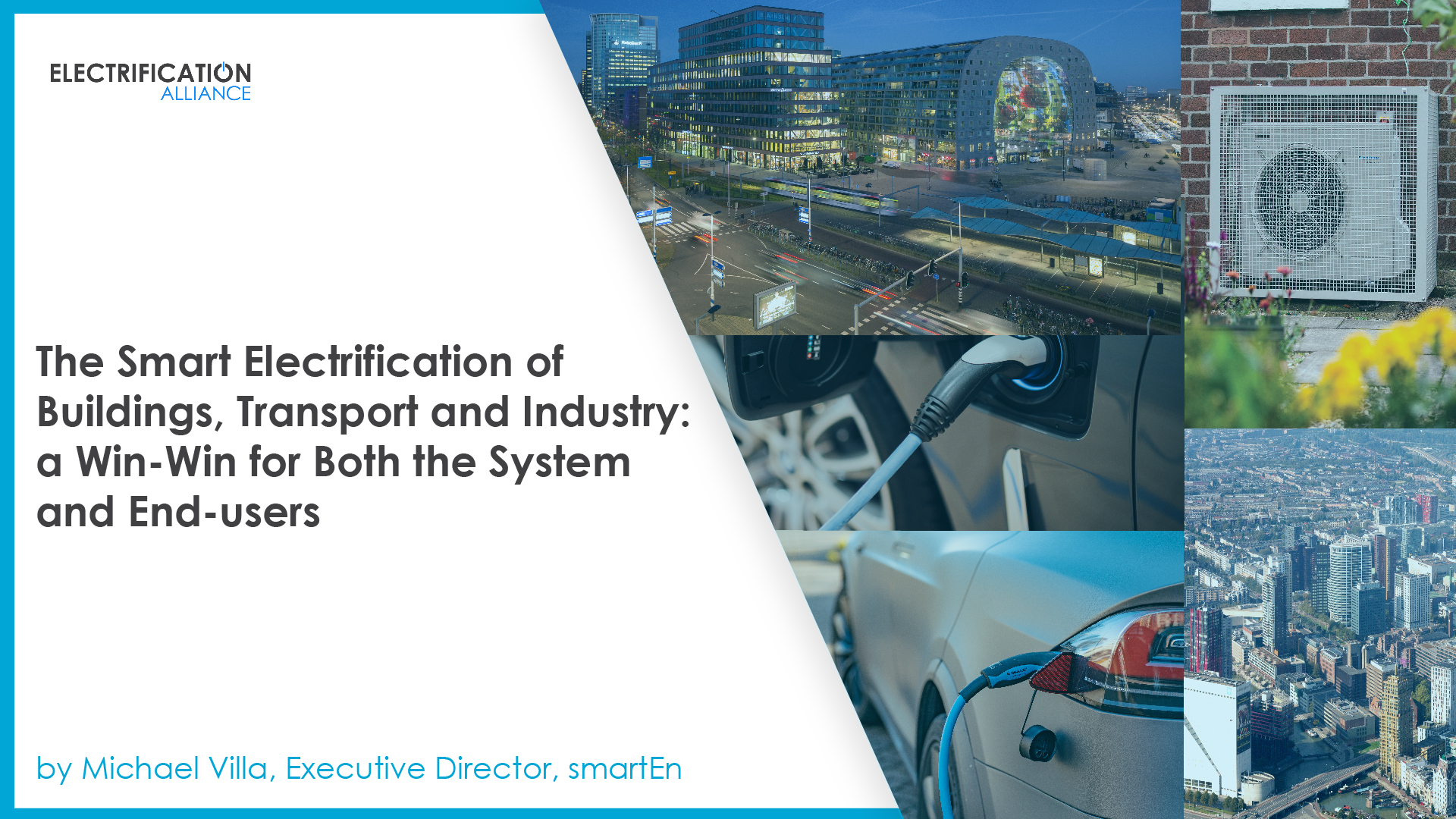
The smart electrification of buildings, transport and industry: a win-win for both the system and end-users
The smart electrification of buildings, transport and industry: a win-win for both the system and end-users

Michael Villa, Executive Director, smartEn
Climate change is one of the most existential threats we have faced to date. It is vital we take action today to fend off its worst consequences – the impact of which we have already seen with the fires and floods in Europe last summer.
The EU has set some clear climate and energy targets for 2030 to ensure we are on the right path, but we must ensure these are achieved in the most cost-effective way possible.
This will require a policy framework geared towards carbon and system efficiency to manage and help penetrate more variable renewable electricity in all end-use sectors in the best way. In this light, the Fit for 55 package should look beyond optimising efficiency at the individual level and foster the contribution of all end-use sectors to consume clean electricity at the right time when it’s best for the whole system and for meeting our decarbonisation objectives. Through the smart management of all decentralised energy resources, we can activate the demand-side flexibility potential of buildings, industries, transport and consumers. Let me explain further.
The Commission’s proposals send a positive signal, with key provisions supporting flexible and renewable-based electrification, notably in road transport.
The proposals for regulation of the Deployment of Alternative Fuels Infrastructure and Renewables Directive rightly recognise the contribution of smart and bi-directional charging to achieving system efficiency while rewarding EV drivers. Some improvements still need to be made to the proposal’s coherence, but the approach is correct.
However, the same effort to promote the smart system integration of electrified end-users lacks for other sectors. The approach for buildings and industry needs to be strengthened to support the deployment of all decentralised energy resources capable of interacting with the electricity system they are connected to and so providing flexibility. These resources include distributed renewable generation, demand response, and energy storage which are key to integrating the growing share of variable renewable electricity.
The EU must address this shortcoming during the upcoming negotiation process with an integrated and consistent approach as the different proposals are closely connected. I have a number of suggestions.
The Renewable Energy Directive needs to set minimum mandatory requirements for the flexible consumption and storage of renewable electricity produced both on-site and from the grid, at least for industry and Heating & Cooling. It should be complemented for buildings by the revision of the Energy Performance of Buildings Directive in December.
The Commission has started to embrace a system efficiency perspective through the Energy Efficiency Directive, albeit timidly. While the Energy Efficiency First principle is recognised as key, it must be applied to all relevant policy, planning and investment decisions taking into account the potential of demand-side flexibility from distributed renewable generation, demand response and energy storage.
While EU policy-makers should confirm the role of System Operators as responsible players in correctly implementing the principle to avoid stranded assets, they must clarify that the procurement of flexibility services is accounted as an efficiency improvement – particularly in the context of the Energy Efficiency Obligation Schemes, to further support the implementation of the Electricity Market Design.
And if the EU is serious about unleashing the industry’s demand-side flexibility potential, it must ensure that Energy Management systems required for large enterprises are integrated with the energy system and react on the basis of external signals.
Finally, we must make sure that we avoid double taxation for electricity storage facilities and eliminate any misinterpretation in the revised Energy Tax Directive: a clear reference supporting prosumer business models should enable it.
The Electrification Alliance’s event on the morning of November 17 presents the perfect fora to discuss the best policy approaches. Join top-level policy-makers, CEOs of leading energy companies in Europe and us and our partners in the Alliance to define the way we can Electrify Now!

